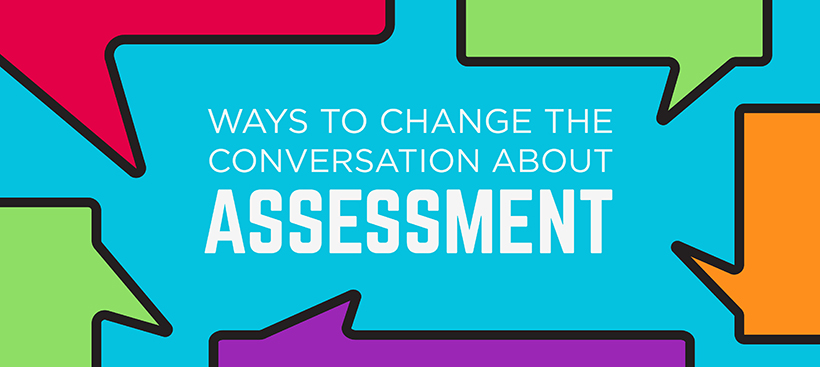From the NCTE Standing Committee on Literacy Assessment
This blog post was written by NCTE member Valente’ Gibson.
A few years ago, I was given the opportunity to be a member of the Professional Dyads of Culturally Relevant Teaching, a project of NCTE’s Early Childhood Education Assembly. The space was created to support educators who teach children of color, children who are emerging bi- and multilinguals, and children from low-income households. In a mutual mentorship, teacher educators and teachers work together to explore and delve deeper into culturally relevant pedagogies.
What can you learn from culturally relevant assessment in comparison to what you learn from conventional assessments?
This question was posed during my work with the Professional Dyad about culturally relevant assessments. The dyad provided an opportunity to suggest culturally relevant approaches for assessing students that get at what they know rather than concealing what they know. Culturally relevant means of assessment give insights about the kinds of assessments that lead and front students’ cultural strengths and curiosities and nurture and extend literacies.
The dyad experience was my first introduction and launch into changing assessments in my classroom. My students were bogged down by standardized testing via benchmarks and end-of-the-year state assessments. Instead of griping about these assessments, I wanted to find ways to connect culturally relevant assessments with traditional assessments. I began by identifying areas and insights into what I know about culturally relevant teaching.
“All instruction is culturally responsive. The question is: to which culture is it currently oriented?” —Gloria Ladson-Billings
Assessment is one of the first words that you hear during your time as a student, as a student teacher, and as a classroom teacher. We harp on the positive and negative effects that assessments can have on students in schools. When talking with other teachers about assessment, we understand the importance of getting to know our students. We agree that we cannot create a curriculum that meets their needs, much less their cultural needs, if we don’t first get to know them as human beings.
Discussions about the following questions have helped me to refine my thinking about classroom assessments:
Why do we/I assess?
As a teacher, I assess students to find out what students have learned, to hold them accountable, and to help guide and set the pace for the classroom. It was crucial that I offered traditional classroom-based assessments because of standardized testing. I found myself translating the language of standardized testing and created assessments that both students and families easily understood. The creation of these assessments was an ideal way for me to build small groups and change my instruction for upcoming days. During my process of learning about assessments, I realized that I had never considered what my students or families thought about testing. I would observe my traditional assessment results and seek to understand what my students didn’t grasp.
It finally hit me that I needed to understand my students first and use my own classroom assessments to accurately understand their knowledge. I wasn’t able to effectively help them in the classroom until I understood them as people and understood their culture. This process was a great way for me to improve my teaching practices and guide me to the creation of culturally relevant assessments.
Which assessment methods are most of the teachers I talk with using to assess their students’ learning or understanding?
One common tool is a rubric. I’ve worked with other teachers to learn how I can make rubrics more culturally relevant. One strategy that I have found useful is to collaborate with families, parents, and students to create rubrics. I first discuss home language with my students and send home a questionnaire to parents that helps me understand the students better from a home perspective. I always include a section on my rubric about the student’s presentation style, and my students are allowed to present on classroom tasks based on what their parents or guardians answered in the questionnaire.
For example, a student was able to present their writing in spoken word because a mother suggested that the best way they can share their knowledge is to “talk it out.” In the questionnaire, the parent answered that their child “talks out” their knowledge at church by speaking in front of the congregation after a Sunday school lesson or vacation Bible school. Talking it out was a perfect way to provide an environment that allowed them to implement their home culture at school.
Another tool that I have used is written conversations. I allow my students to write in their home languages, and in one case, two partners wanted to write their conversation using African American Language. The ease at which the conversation flowed and the investment of both students was such a pleasure to observe. They were actively engaged in their writing and didn’t complain that they didn’t know what to write because it came naturally.
What is culturally relevant/responsive teaching and how do we become responsive as teachers?
One of the most important lessons I’ve learned in my journey to become more responsive as a teacher is the need for constant dialogue around assessments. We all need to look into our daily traditional assessments and discover ways that we include students and their cultural knowledge, and scaffold their learning with what students already know.
When we collaborate with other teachers, in addition to parents and students, we are in a better position to learn about cultural literacy practices of our students and more about their community. When I engaged in conversations with parents and students, I was able to find ways of integrating their lives into our classroom. As my students were able to connect with assessments, they were able to be more successful in the classroom.
As you seek to understand culturally relevant assessments, find yourself as a teacher. Question yourself about whether your assessments are responsive to students’ learning in the classroom and respectful of their culture. I suggest collaborating with families and inviting them in to have a night of creating assessments.
Also, invite your peers to talk about the assessments that you are using. Share your best practices with your peers to demonstrate how you all can work together to create assessments to be relevant to your students. This collaboration is important and necessary so that we can learn from one another and best aid in the growth and development of our students.
Resources
Going Public with Assessment: A Community Practice Approach—This volume by Kathryn Mitchell Pierce and Rosario Ordoñez-Jasis shares classroom vignettes, strategies, and resources for “going public” with literacy assessment through teacher collaboration with colleagues, with families, and with the community.
Learn more about the Professional Dyads and Culturally Relevant Teaching project.
 Valente’ Gibson is a fifth-grade teacher at Jackson Creek Elementary, Columbia, South Carolina. He holds the position of Treasurer with the NCTE Early Childhood Education Assembly. Valenté was a participant in the PDCRT (Professional Dyads and Culturally Relevant Teaching) project. He is also a teacher for the Center for the Education and Equity of African American Students (CEEAAS), where he helps develop learning modules that embed culturally relevant curriculum for effective teaching of African American students.
Valente’ Gibson is a fifth-grade teacher at Jackson Creek Elementary, Columbia, South Carolina. He holds the position of Treasurer with the NCTE Early Childhood Education Assembly. Valenté was a participant in the PDCRT (Professional Dyads and Culturally Relevant Teaching) project. He is also a teacher for the Center for the Education and Equity of African American Students (CEEAAS), where he helps develop learning modules that embed culturally relevant curriculum for effective teaching of African American students.

